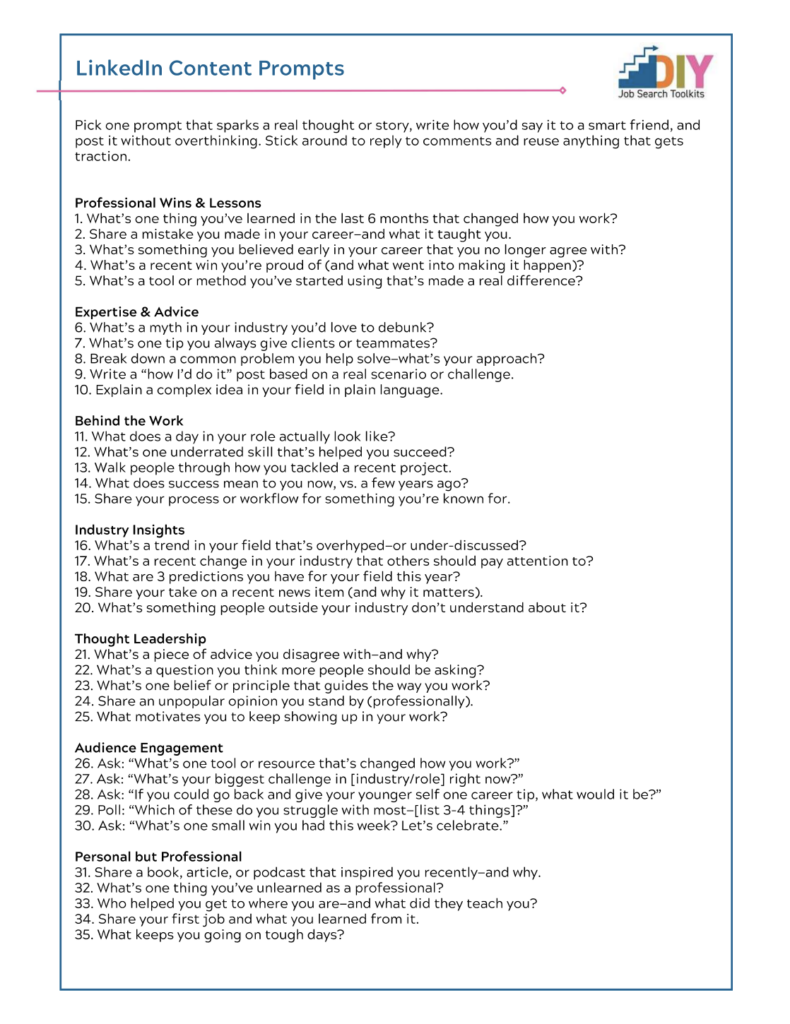The No-BS Guide to Showing Up Online and Getting Hired
Let’s be real: job hunting today isn’t just about resumes and applications. It’s a marketing and sales game.
You’re the product. Employers are your buyers. If they can’t find you online—or what they do find is weak—they move on.
A strong online presence isn’t “nice to have.” It’s how you get on the radar, get interviews, and get hired.

Here’s Why It Matters:
Before a recruiter emails you back, before a hiring manager checks your resume—they Google you.
If they find:
- A dusty LinkedIn with no info
- Nothing beyond your resume
- Or nothing at all
That’s a red flag. It signals you’re not engaged, not current, or not serious. A sharp online presence says the opposite: This person knows their stuff. They’re credible. Let’s talk.
Don’t Love Social Media? You’re Not Alone.
You don’t have to post daily. You don’t need to be on video. You don’t need to chase likes or trends. Here’s how to get noticed without burning out or becoming someone you’re not.
01
Let Your Work Do the Talking
Create a clean, easy-to-navigate portfolio, website, or LinkedIn profile that highlights what you
do. Include:
- Case studies or project snapshots
- Testimonials or recommendations
- Results you’ve delivered
If you say nothing else, let your work say it all.
02
Talk About the Problems You Solve
This is key. Don’t just list job titles—show what you’re good at and how you think.
Example: “I help teams streamline operations with better systems—cutting admin time by 40%.”
Be specific. Be relevant. Employers want problem-solvers, not just job seekers.
03
Write Instead of Perform
Not into video? Cool. Focus on writing:
- Thoughtful LinkedIn posts
- A short blog or article
- A Medium or Substack piece on your field
Writing is powerful. It shows how you think, what you care about, and what you know.
04
Pick the Right Platforms
You don’t need to be everywhere. Just choose where your target audience (aka employers or
peers in your field) hang out.
Good options:
- LinkedIn (non-negotiable for most professionals)
- Medium/Substack (great for written insights)
- Portfolio site (especially for creative or tech roles)
- Relevant online communities (Slack groups, Reddit, etc.)
Quiet corners > noisy platforms.
05
Automate and Repurpose
If you’re creating content, don’t overthink it. Write once, then re-use:
- A LinkedIn post becomes a blog
- A blog becomes a short video script
- A framework you share becomes a downloadable PDF
Batch it. Schedule it. Don’t live online—just show up with intention.
06
Set Boundaries
You don’t need to be “on” all the time. Define your pace:
- One LinkedIn post a week
- 15 minutes of networking a day
- A monthly article or update
Consistency beats volume. Show up regularly, not constantly.
Don’t Love Social Media? You’re Not Alone.
You don’t have to post daily. You don’t need to be on video. You don’t need to chase likes or trends. Here’s how to get noticed without burning out or becoming someone you’re not.
01
Let Your Work Do the Talking
Create a clean, easy-to-navigate portfolio, website, or LinkedIn profile that highlights what you
do. Include:
- Case studies or project snapshots
- Testimonials or recommendations
- Results you’ve delivered
If you say nothing else, let your work say it all.
02
Talk About the Problems You Solve
This is key. Don’t just list job titles—show what you’re good at and how you think.
Example: “I help teams streamline operations with better systems—cutting admin time by 40%.”
Be specific. Be relevant. Employers want problem-solvers, not just job seekers.
03
Write Instead of Perform
Not into video? Cool. Focus on writing:
- Thoughtful LinkedIn posts
- A short blog or article
- A Medium or Substack piece on your field
Writing is powerful. It shows how you think, what you care about, and what you know.
04
Pick the Right Platforms
You don’t need to be everywhere. Just choose where your target audience (aka employers or
peers in your field) hang out.
Good options:
- LinkedIn (non-negotiable for most professionals)
- Medium/Substack (great for written insights)
- Portfolio site (especially for creative or tech roles)
- Relevant online communities (Slack groups, Reddit, etc.)
Quiet corners > noisy platforms.
05
Automate and Repurpose
If you’re creating content, don’t overthink it. Write once, then re-use:
- A LinkedIn post becomes a blog
- A blog becomes a short video script
- A framework you share becomes a downloadable PDF
Batch it. Schedule it. Don’t live online—just show up with intention.
06
Set Boundaries
You don’t need to be “on” all the time. Define your pace:
- One LinkedIn post a week
- 15 minutes of networking a day
- A monthly article or update
Consistency beats volume. Show up regularly, not constantly.
What Matters Most
Be clear about who you are, what you do, and what problems you solve
Share value, not just self-promotion
Play to your strengths—visuals, writing, data, strategy
Focus your energy—one or two strong platforms is enough
Be searchable—make sure people can find you and know what you bring
Final Thought
You don’t have to be a personal brand or an influencer to get hired. You just need to be visible, clear, and useful.
Think of your online presence as your digital handshake. It should say: “Here’s who I am. Here’s what I do. Here’s how I can help.”
Make it easy for the right people to find you—and want to work with you.
